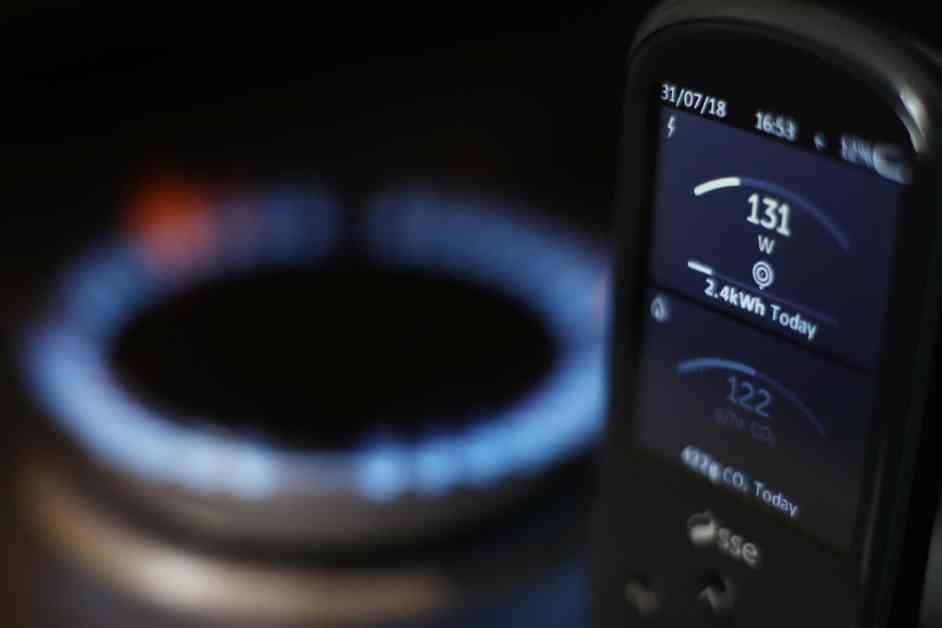Energy Price Cap: Understanding Potential Rise to £1,714
Experts in the energy industry are predicting that household energy bills are expected to rise as winter approaches. It is said that a household using a typical amount of gas and electricity would pay £1,714 a year starting from October. This amount is currently the lowest it has been in two years, as it was previously at £1,568. The energy regulator, Ofgem, is set to announce the next official quarterly price cap on Friday, August 23. The upcoming price cap adjustment is expected to result in a 9% increase in the average household energy bill come October.
What is the energy price cap and what is Ofgem?
Ofgem, short for the Office of Gas and Electricity Markets, serves as the independent regulator of the British energy market with the primary goal of protecting customers. One of the key functions of Ofgem is to set a limit, known as a price cap, on what energy firms can charge customers for default or standard and variable tariffs. The price cap was introduced by Ofgem in January 2019 as a temporary measure, but it has since remained in effect.
The purpose of the price cap is to regulate and restrict the amount that energy suppliers can charge customers for their default or standard variable tariffs. This measure is put in place to shield consumers from excessively high energy prices, particularly those who do not frequently switch suppliers to find more cost-effective deals. It is important to note that the price cap applies to customers on default energy tariffs, regardless of whether they pay via direct debit, standard credit, or a prepayment meter, and does not apply to fixed-term tariffs.
In the past, variable tariffs tended to be more expensive than fixed-rate deals, leading many individuals to remain on these tariffs either because they failed to switch suppliers after their fixed term ended or because their supplier ceased operations. However, the current scenario has seen fixed-term tariffs becoming pricier than the cap, affecting a majority of consumers. Ofgem highlighted in August 2022 that due to the global increase in gas prices, customers may find it challenging to secure better-value tariffs than being on a supplier’s default rate covered by the Government’s energy price cap if they are already on one.
How does the energy price cap work?
The energy price cap functions by restricting the maximum amount that energy suppliers can charge per unit of gas or electricity for customers on default tariffs. This cap is based on an estimation of typical usage for an average household, meaning that the cap does not limit the total bill a household may receive. If a household utilizes more energy, their bill will be higher, and conversely, if they use less energy, they will pay less.
Additionally, the energy price cap includes a maximum daily standing charge, which represents the fixed cost associated with receiving energy to one’s home. The cap amount is determined by taking into account various costs that energy suppliers incur, such as wholesale energy prices, network costs, operating expenses, policy costs, VAT, and a margin for earnings. The specific cap amount varies based on how customers pay for their energy, whether through monthly or quarterly direct debit, upon receipt of a bill, or through prepayment.
How is the energy price cap different from the energy price guarantee?
While the energy price cap and the energy price guarantee (EPG) are related mechanisms, they serve distinct purposes. Following the surge in energy prices triggered by Russia’s invasion of Ukraine in February 2022, the UK Government introduced the EPG as a temporary measure to mitigate the impact on households. The EPG establishes a maximum price per unit of gas and electricity, with the Government covering any costs that exceed this level. This initiative effectively capped the typical annual energy bill at £2,500.
Unlike the price cap, which reflects wholesale energy costs, the EPG was a governmental intervention aimed at providing additional protection to consumers. The EPG concluded on March 31, 2024, and from July 1, 2023, energy prices have been solely determined by the Ofgem price cap.
In conclusion, as we approach the colder months and energy consumption typically rises, it is crucial for consumers to understand the dynamics of the energy price cap and how it impacts their household bills. By staying informed and proactive in seeking out the best energy deals available, individuals can effectively manage their energy costs and ensure financial stability during these challenging times in the energy market.












